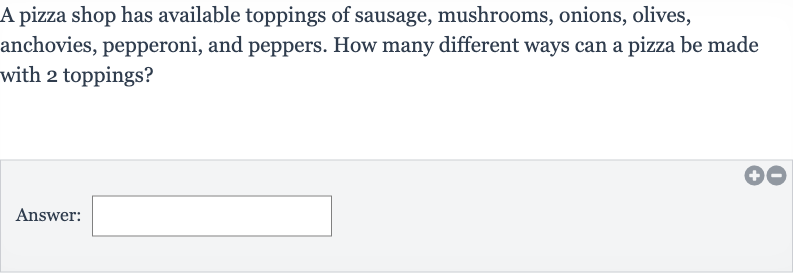Full solution
Q. A pizza shop has available toppings of sausage, mushrooms, onions, olives, anchovies, pepperoni, and peppers. How many different ways can a pizza be made with toppings?Answer:
- Given Toppings: We are given different toppings to choose from, and we want to know how many different -topping combinations can be made. Since the order in which we select the toppings does not matter (sausage and mushrooms is the same as mushrooms and sausage), we are dealing with combinations, not permutations.
- Combination Formula: To calculate the number of combinations of items taken at a time, we use the combination formula, which is , where is the total number of items, is the number of items to choose, and “” denotes factorial.
- Calculate : In our case, (the number of toppings) and (since we are choosing toppings). Plugging these values into the formula gives us .
- Calculate Factorials: Calculating the factorials, we get , , and .
- Simplify Factorials: Simplifying the factorials in the combination formula, we get because the in the numerator and denominator cancel each other out.
- Perform Calculation: Performing the calculation, we find .
More problems from Experimental probability
QuestionGet tutor help
QuestionGet tutor help
QuestionGet tutor help
QuestionGet tutor help
QuestionGet tutor help
QuestionGet tutor help
QuestionGet tutor help
QuestionGet tutor help
QuestionGet tutor help

